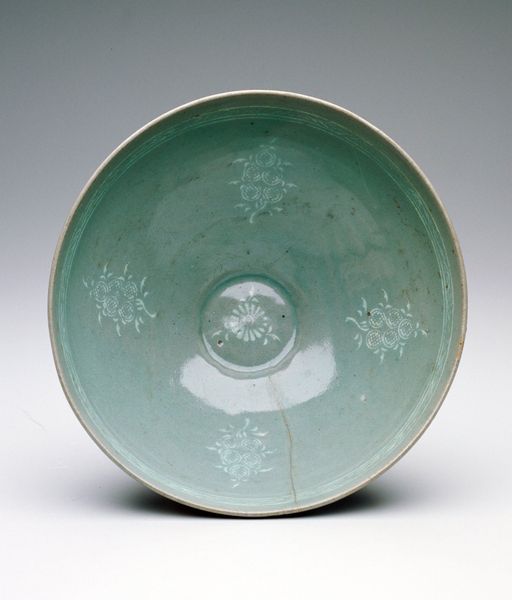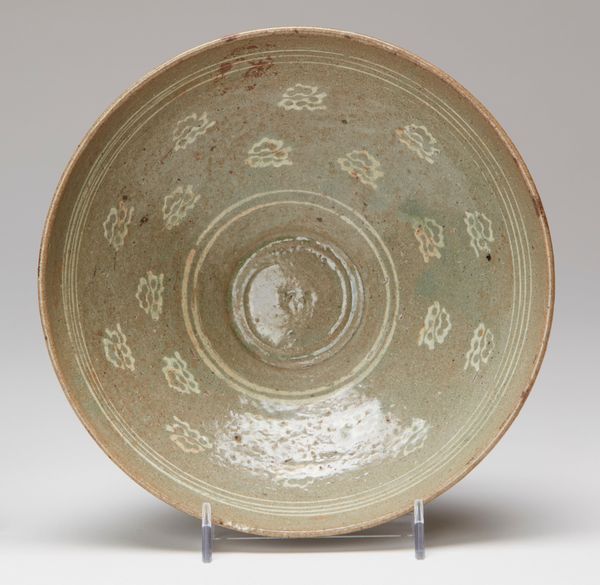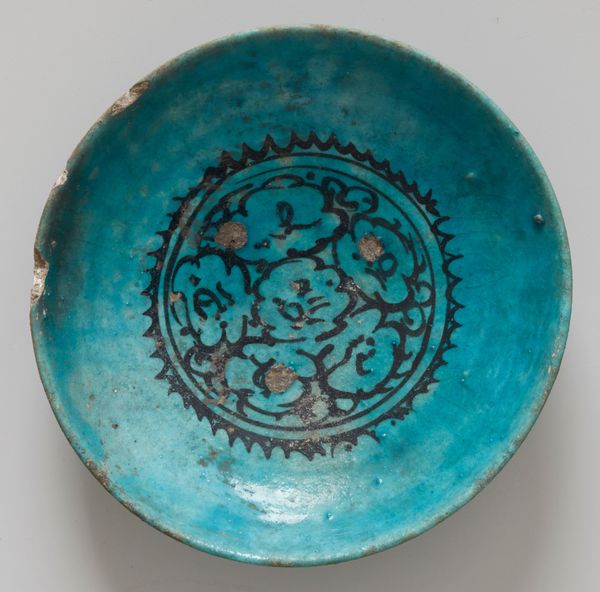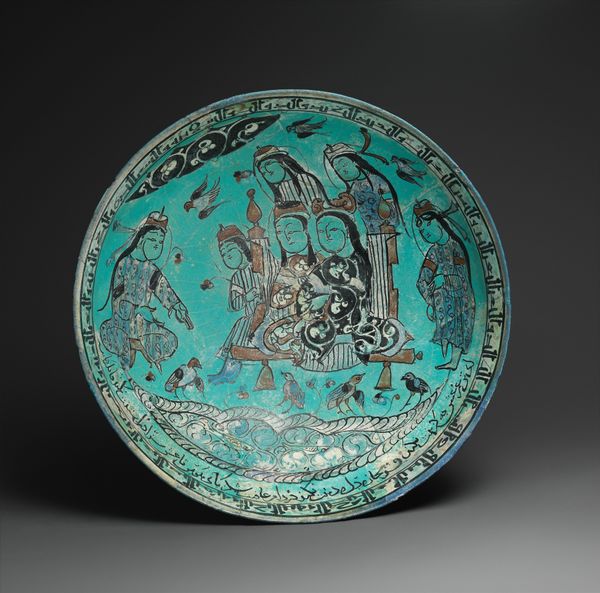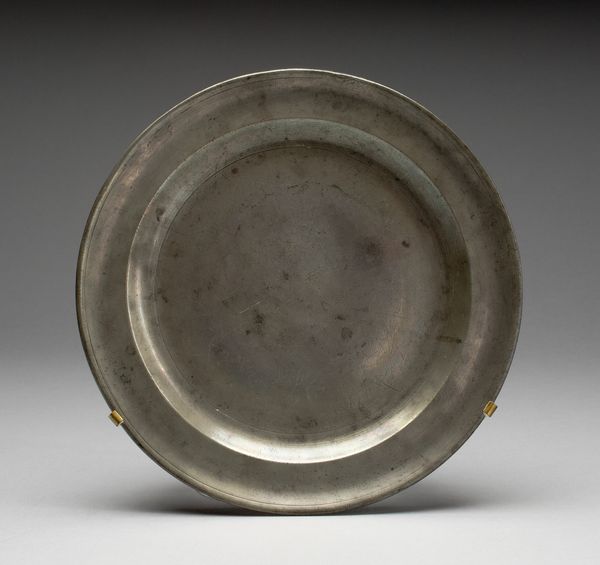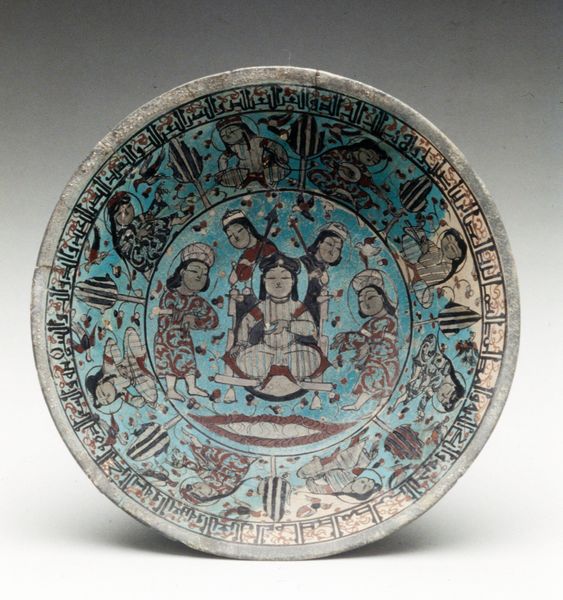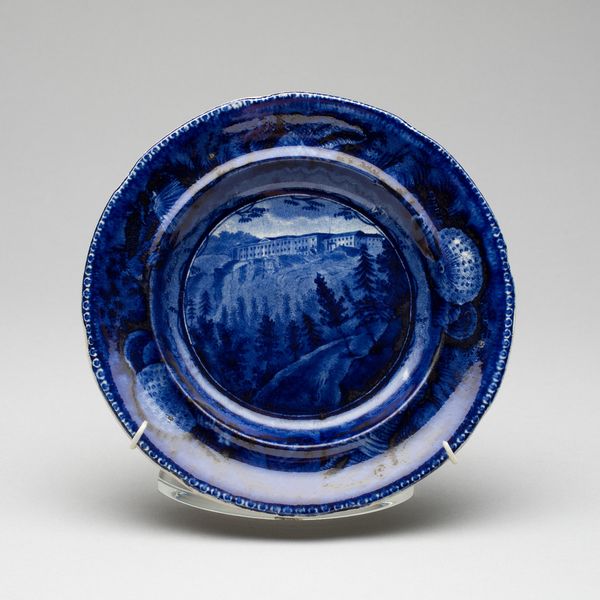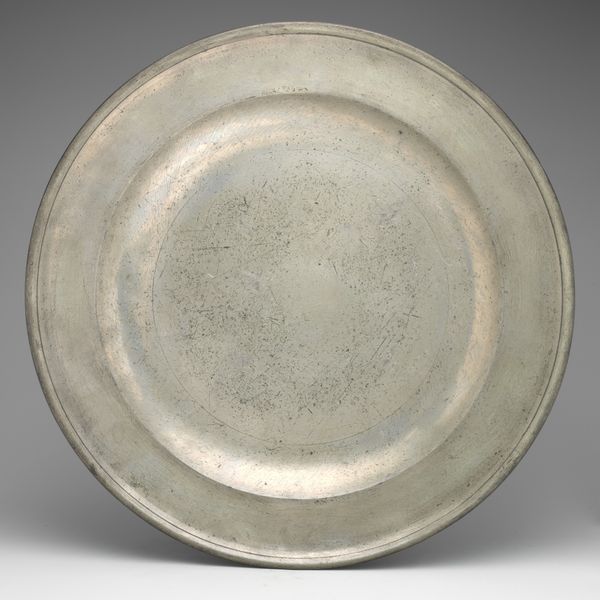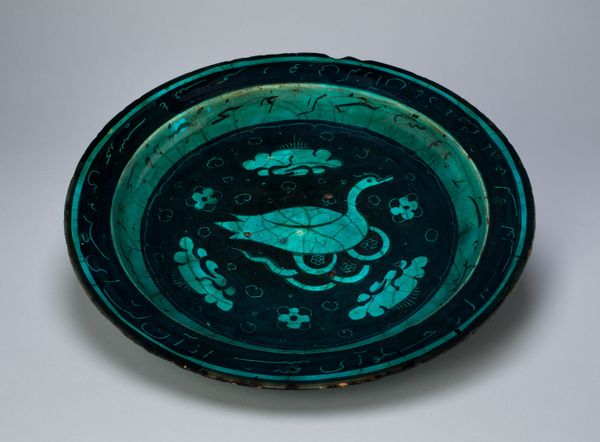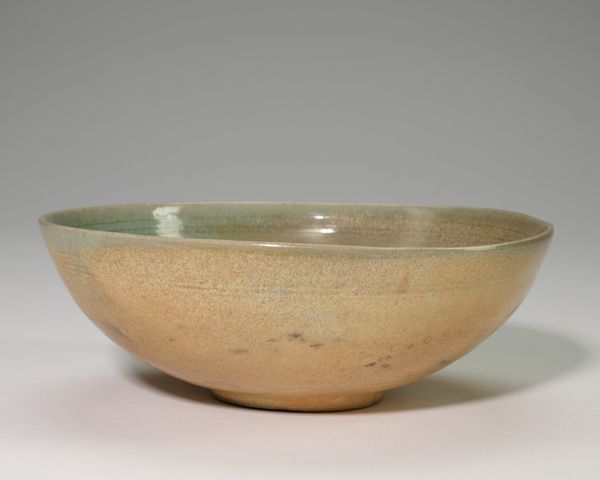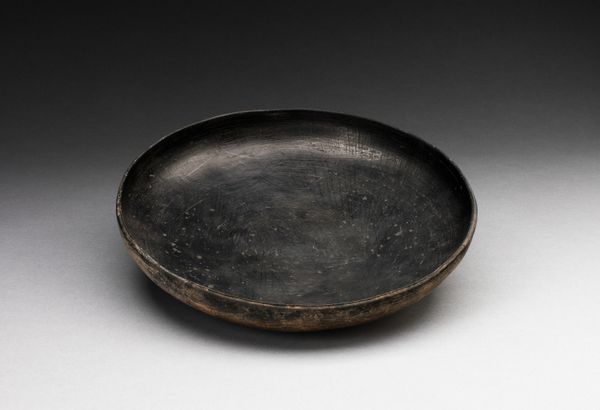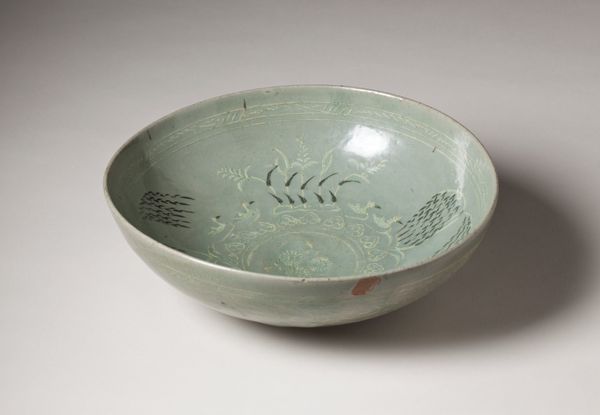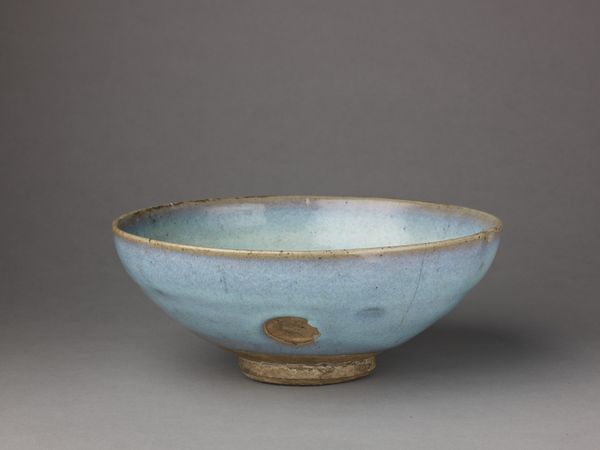
ceramic
#
ceramic
#
ceramic
#
islamic-art
Dimensions: 3 1/4 x 14 1/16 in. (8.26 x 35.72 cm)
Copyright: Public Domain
This striking turquoise dish of unknown date was made by an anonymous maker. Its appeal lies in its color and the relief carvings that encircle the rim. It's worth asking, what was the social function of such a dish? Was it simply utilitarian, or was it a display of status? Without knowing the date or the place where it was made, it's difficult to say for sure, but the very fact that it's been preserved in a museum suggests that it's more than just a piece of everyday pottery. We can examine the relief carvings and the glaze to gain more insight into the techniques and styles of the time and place it was made. Was it made for local consumption, or was it intended for trade? What does the design suggest about the cultural values of the society that produced it? To answer these questions, one might consult studies of the archeology of ceramics and museum collections. The meaning of this dish will depend on the social and institutional contexts that produced it.
Comments
minneapolisinstituteofart almost 2 years ago
⋮
The interior of this exceptionally large and well-preserved Kashan dish is decorated with an elegant Arabic verse: La elah ela allah (No god other than god). During the Seljuk period, innovative Kashan workshops produced a variety of luster, underglaze-decorated, and monochrome wares. Chemical changes in the glaze resulting from centuries of burial gave this striking work a heavy iridescence.
Join the conversation
Join millions of artists and users on Artera today and experience the ultimate creative platform.
